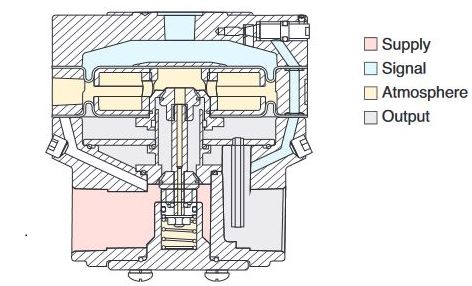Sign up for the ControlAir newsletter.
Get news, updates, and offers direct to your inbox.
In short, a volume booster is a pressure regulation device that is controlled by a pilot pressure instead of a spring or adjustment thread as in an air pressure regulator. A volume booster may also be called a “pilot operated regulator”. The spring in a regulator normally supplies the mechanical pressure required to open the supply valve until there is an equal force balance between output pressure and spring force. In a volume booster, instead of a spring providing force balance, the “spring force” is supplied by a pilot pressure acting on a diaphragm. There are four basic air components to a volume booster circuit:

The main purpose of a volume booster is to deliver a large volume of air downstream at a given pilot pressure. The output pressure can be modulated by the pilot pressure. Volume boosters are generally used in the following applications:
Some common options for a volume booster include the addition of a bypass valve (bypass needle valve) which can be used to adjust the dynamic response to provide stable operation over a wide variety of applications. Another option could be the addition of an adjustable bias to skew the output pressure from the signal pressure. Although, this is generally found in smaller versions of a volume booster, sometimes referred to as an air relay. This could be a positive or negative bias. Other options could include special diaphragm materials for caustic and low temperature environments.
Please contact our technical support team for any questions regarding the use of a volume booster in your system.